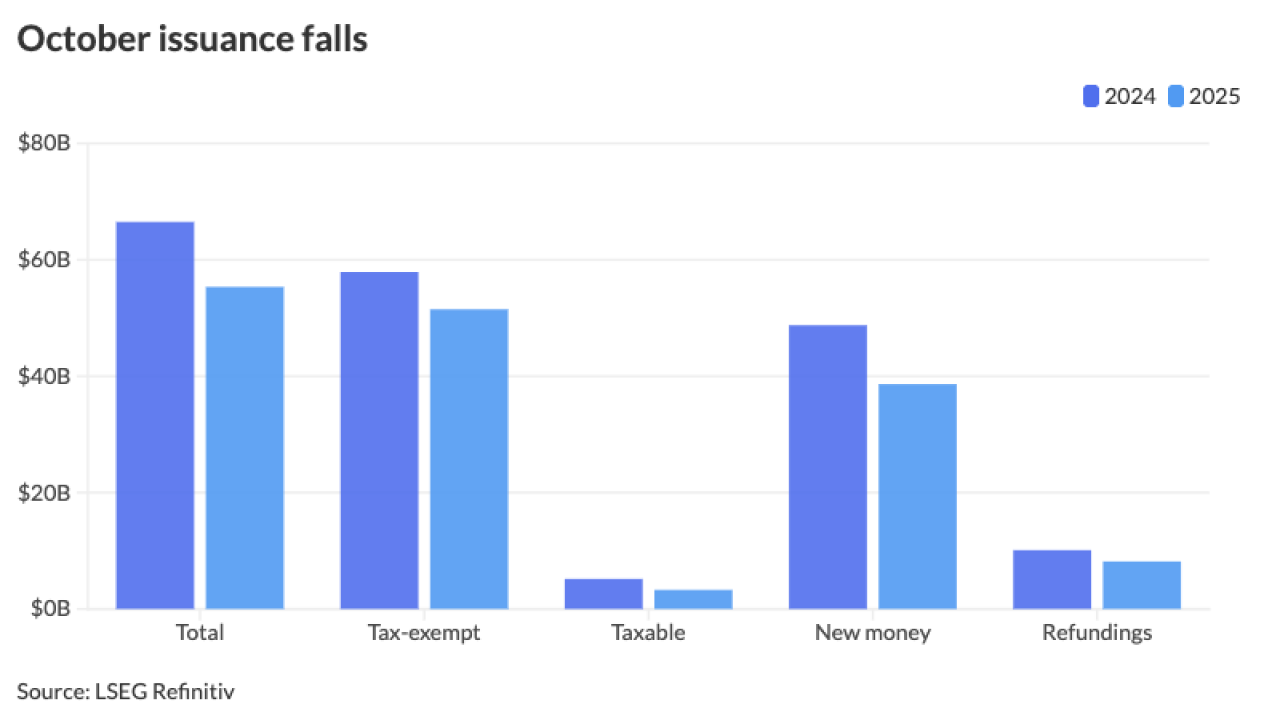WASHINGTON – The federal revenue losses from tax-exempt public purpose bonds will total $187.7 billion for fiscal years 2015-2019, the Joint Committee on Taxation told House and Senate tax-writing and budget committees this week.
The estimate, $8.1 billion higher than last year’s estimate of $179.6 billion for fiscal years 2014-2018, was included in the JCT’s “Estimates of Federal Tax Expenditures for Fiscal Years 2015-2019,” which was sent to the House Ways and Means Committee, Senate Finance Committee and House and Senate Budget Committees on Monday.
The JCT revenue estimates play a key role in tax and budget legislation, particularly when lawmakers want the revenue losses to balance out with the revenue gains of the overall provisions.
Tax-exempt municipal bonds are considered to be tax expenditures because the interest is excludable from gross income. Tax expenditures are defined as “revenue losses attributable to provisions of the federal tax laws, which allow for a special exclusion, exemption, or deduction from gross income or which provide a special credit, a preferential rate of tax, or a deferral of tax liability,” according to the JCT.
The committee’s document contains a chart that specifies revenue losses or outlays of tax credits for each type of bond.
Tax-exempt private-activity bonds will result in revenue losses totaling $58.1 billion from fiscal 2015-2019, according to the report.
The greatest amount of PAB revenue losses over the five-year period would be $19.1 billion from bonds for private nonprofit and qualified public educational facilities and $13.1 billion from bonds for private, nonprofit hospital facilities. These would mostly be 501(c)(3) bonds for nonprofit borrowers in conduit deals.
The next largest PAB revenue losses would be $6.9 billion from bonds for owner-occupied housing or mortgage revenue bonds. Following close behind would be $5.4 billion of losses for rental housing or multi-family housing bonds.
PABs for private airports, docks and mass commuting facilities would result in revenue losses of $4.9 billion from fiscal 2015-2019, the JCT said. PABs for student loans would lose $3 billion. PABs for sewage, water and hazardous waste facilities would lose $2.3 billion over the five-year period. Small issue bonds would lose $2.1 billion over the same five years, the JCT said.
Other PAB revenue losses would include: $600 million from bonds for highway projects and rail-truck transfer facilities; $300 million from bonds for veterans housing; $200 million from bonds for energy production facilities; $100 million from bonds for high speed intercity rail facilities, and: $100 million from bonds for green buildings and sustainable design projects.
Build America Bonds, taxable bonds for which the Treasury Department pays issuers federal subsidies, will result in $16 billion of revenue losses during the same period, the JCT said.
Tax credits for holders of clean renewable energy bonds, qualified energy conservation bonds and qualified zone academy bonds will result in federal outlays of $2.3 billion from fiscal 2015-2019, according to the JCT.
The JCT also estimated revenue losses of $6 billion for qualified school construction bonds and $900 million for recovery zone development bonds.





